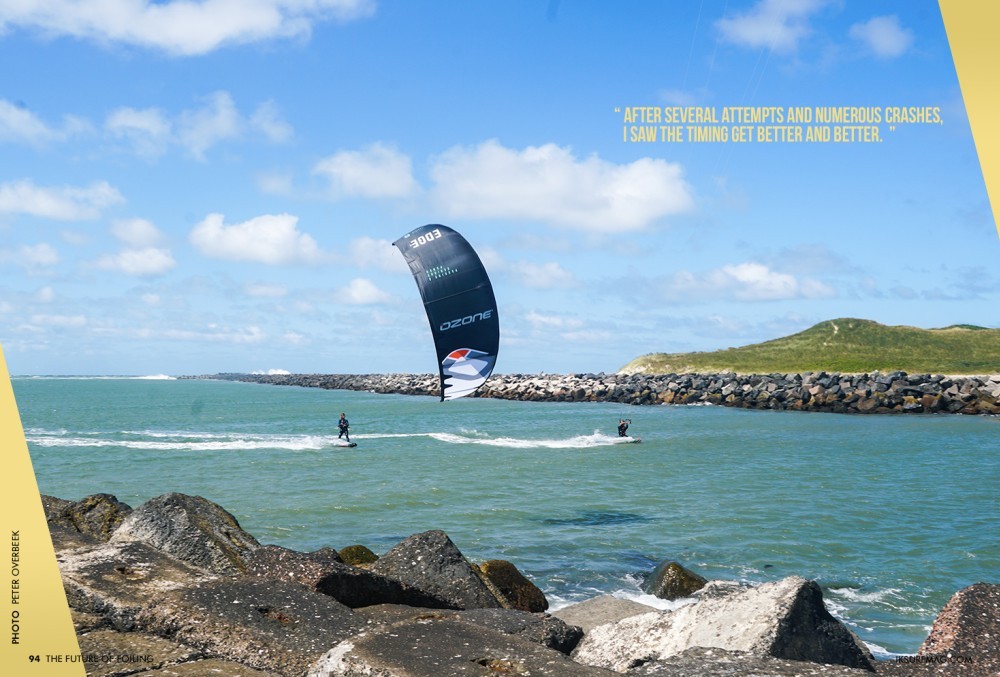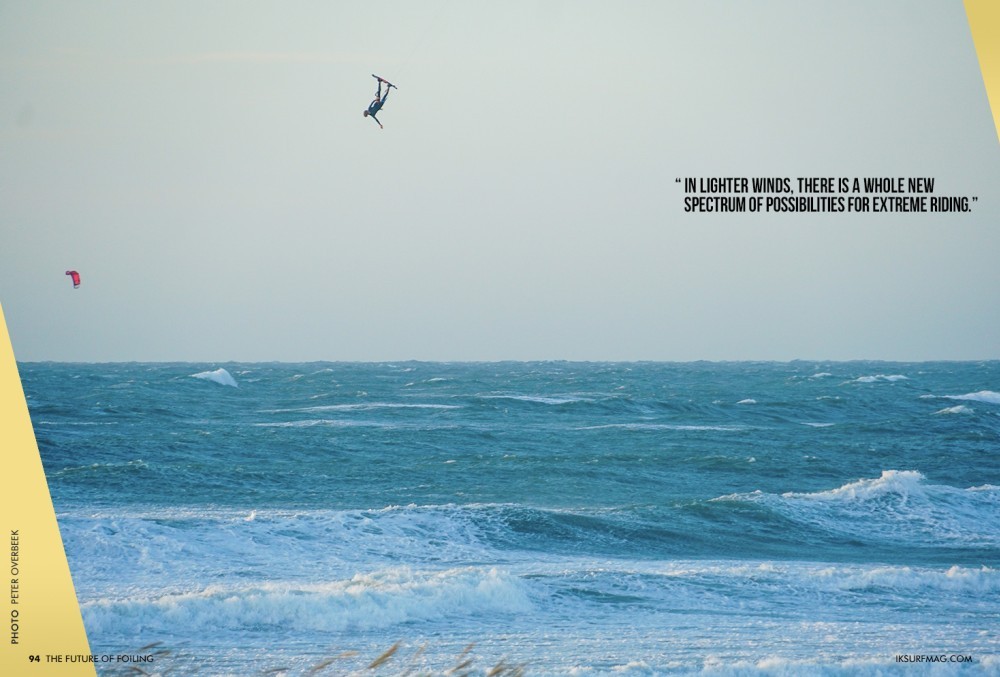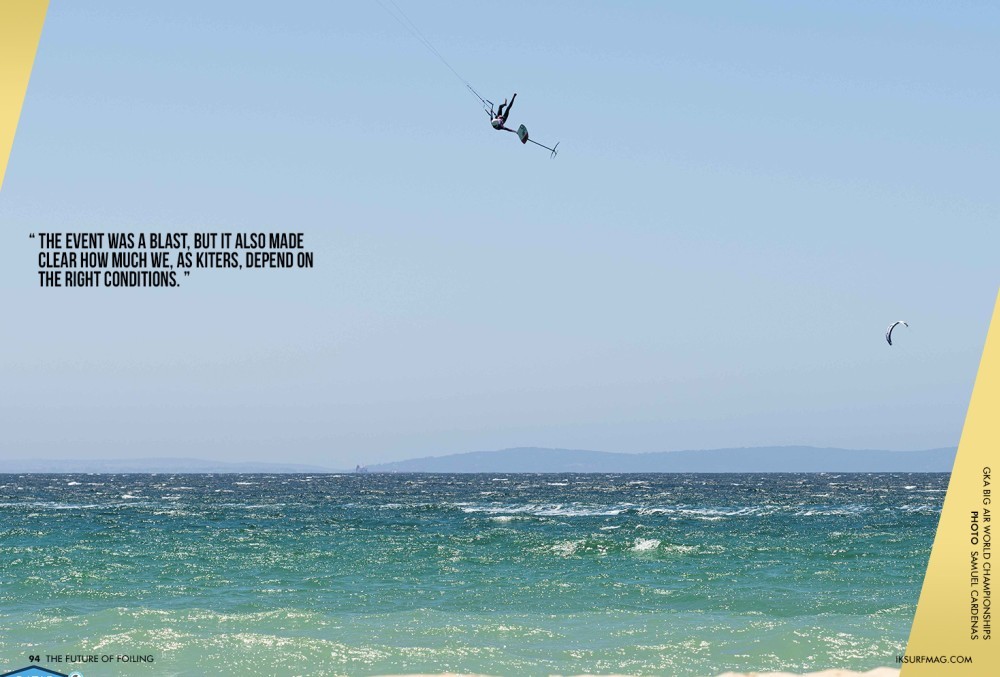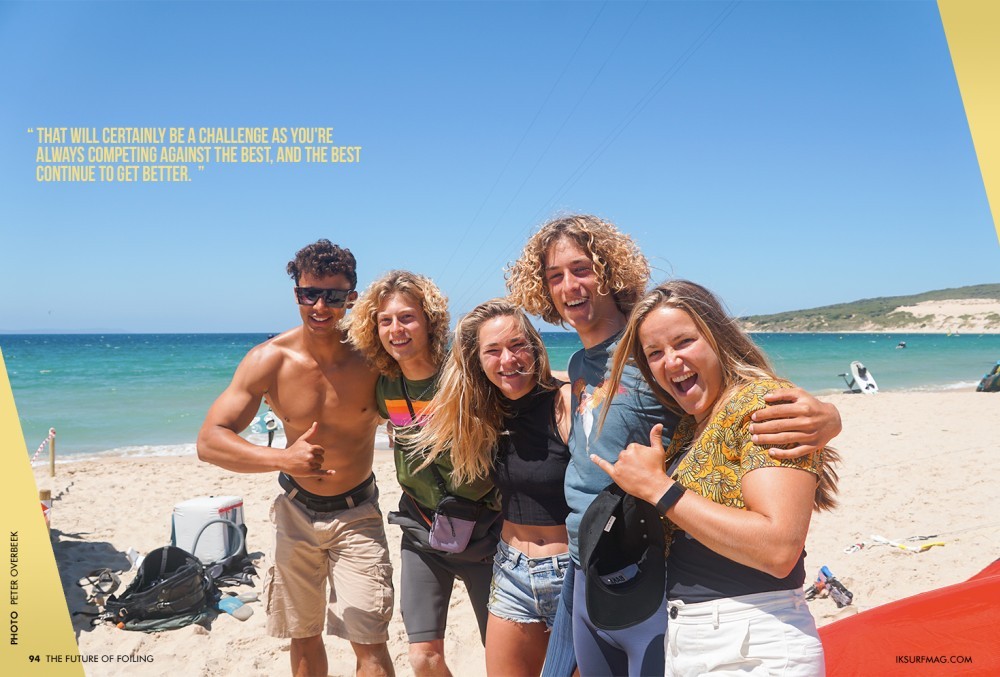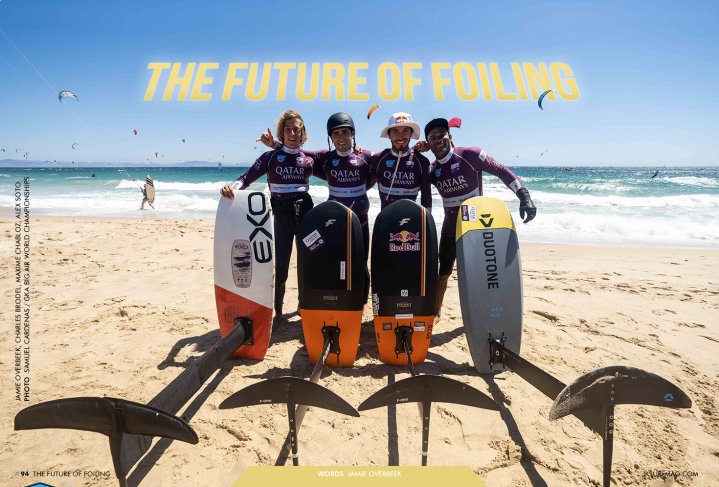
The Future of Foiling
Issue 94 / Tue 9th Aug, 2022
Hydrofoil big air is an emerging discipline that has gained momentum thanks to evolving technology, new foil competitions, and pioneers like the young and talented Jamie Overbeek. In this article, Jamie takes us on a walk through the world of big air foiling!
When I first started kiting, I had no idea hydrofoiling existed; I suppose this technology was still in its infancy in the kiting world. Still, whether today or ten years ago, I can imagine there aren't too many six-year-olds that know what a hydrofoil is!
My first experiences with flying small kites were at the age of six; back then, neither myself nor my family could have predicted where my kitesurfing journey would take me. But, when I started catching my first airs on the land board and twin tip, I knew that big air would become my passion.
Only a few years ago, I took my first foray into foiling. At age 12, while riding on the FLYSURFER team, they started a collaboration with Levitaz. Through them, I had the chance to ride my first hydrofoil setup. The possibility of staying out on the water for longer, in super light wind where the twin tip couldn't do the job, opened up a whole new world for me and a whole lot more hours on the water.
My first foil was more of a freeride setup, but that didn't stop me from being curious about how far I could take it. I had to know: Was jumping on a foil possible?! I found out fairly quickly that it was. The tricky part was a clean landing, which remains the main difference between big air on a twin tip and a foil. After several attempts and numerous crashes, I saw the timing get better and better. That's when big air on a hydrofoil was born for me.
The gear has changed quite a lot since then, as has the level of riding, personally and throughout the kitefoiling community. Now, I use a race mast and wing, and the adrenaline really kicks in when I'm rocketing through the water at high speed. I soon discovered that combining a high-performance wing capable of those high speeds with a high-aspect foil kite was the magical recipe for achieving insane heights in the lightest of wind.
You need some serious wind for big air on a twin tip; the fun only starts at around 30 knots! On the contrary, if you look at big air on a hydrofoil, things start firing up at about 15 knots and reach extreme levels at 25 knots. In lighter winds, there is a whole new spectrum of possibilities for extreme riding. The question is, of course, if the kite industry and community will embrace this, getting more riders evolved and adding this discipline as a competition format, where hydrofoil big air events are run alongside existing twin tip big air events.
For many athletes in the hydrofoil discipline, racing is the top priority, especially with the opportunity to compete in the Olympics in Paris 2024. A few years ago, I was asked by my sponsors to get into the racing discipline. I have so much respect for the racing athletes, but I knew it wasn't for me. I wasn't prepared to put everything I love about kiteboarding on the line to focus on racing only. I get my kicks from height and extremity, which made the decision to stay on the big air track an easy one. Looking back, I am sure I've made the right decision, as the world of hydrofoil big air is starting to take off!
About 18 months ago, the first-ever hydrofoil mixed discipline event occurred in Brazil. While I wasn't present at that event, I saw what Charles Brodel was able to achieve on his foil, and it drove me to shift into second gear with my own riding. It wasn't a pure big air event but marked the beginning of the rise of a new discipline. More recently, the GKA added a hydrofoil category to the Qatar Airways GKA Big Air World Championships in Tarifa. As soon as I heard this news, I knew it was time to step up my game and focus most of my training on hydrofoil big air.
Having a family who loves to kite as much as I do has been so important and allows me to travel and spend more time on the water. With Tarifa on our minds, we planned a big road trip from our home in the Netherlands down to the southern tip of Spain, me for the competition, and my brother, Sean, to meet and start working with his new crew at RRD. There was so much gear to bring, and with airlines under major strain, we decided to make the trip by car. The 2700 km drive alone was an adventure! But, after 30 hours, we made it to Balneario to experience the power of the Levante.
Seeing the international big air community come together and the level big air riding has reached on twin tip was insane. There has been an unbelievable amount of progression and innovation, so much that you don't even recognize the sport anymore, especially comparing what tricks we saw in that event to the tricks being landed as recently as one or two years ago.
The event was a blast, but it also made clear how much we, as kiters, depend on the right conditions. Mother nature is not as predictable as we would like it to be. As is often the case in kite competitions, it was a waiting game, but no matter what, when that call comes, you had better be ready!
Just being a part of an event like this was beyond expectation. Meeting, training, and battling riders at the top of their game was an unbelievable experience. I learned a lot and got a taste of how competition riding feels. Even better, I achieved my goal of reaching the podium and personal highlights of landing my first ever doobie loop on a hydrofoil and scoring a jump height of 29.6 metres on the Surfr app.
When it was all said and done, it was an honour to stand in the 2nd place position with Charles Brodel in 1st and Maxime Chabloz in 3rd. These riders have taken hydrofoiling to new heights, and their innovative and versatile riding styles are ones I aspire to keep up with. Standing next to this calibre of athletes is the best feeling you can get! With the right conditions and enough time to expand my skills, I'm confident I can one day reach the highest step on the podium! That will certainly be a challenge as you're always competing against the best, and the best continue to get better.
Big Air foiling is on the rise, and with the possibility of a hydrofoil big air tour in the cards, there is plenty more to come. As the sport and technology continue to grow, the height and extremity possible within it will too. You can expect to see tricks you've never seen before performed on a hydrofoil, at heights greater than 20 metres and with combinations that will blow you away! For now, I'll keep chasing the wind, and I can promise that you'll see me at the next hydrofoil big air event!
Videos
By janka.koncekova




